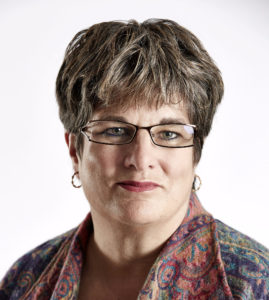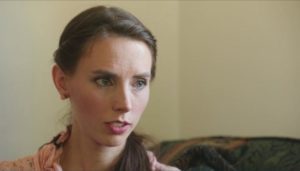 I am writing this in the early hours of the American morning in Philadelphia. This comes prior to taking a bus to New York and the aeroplane back to Edinburgh. The extraordinary fact of starting this at 4 am indicates how difficult it is to adapt to a five-hour time shift. I feel for those who make this kind of adjustment on a regular basis.
I am writing this in the early hours of the American morning in Philadelphia. This comes prior to taking a bus to New York and the aeroplane back to Edinburgh. The extraordinary fact of starting this at 4 am indicates how difficult it is to adapt to a five-hour time shift. I feel for those who make this kind of adjustment on a regular basis.
This post will be a tale of two cities. Even though I have been in one place, I have been in spirit attending the Synod at York with all its dramas of the past few days. But I need, first of all, to report a few of the events in Philadelphia. My paper at the conference was well received. In it I was exploring the idea that Joan of Arc was a charismatic leader. Within the context of this conference the term charismatic leader is normally a negative description. It implies self-aggrandisement and narcissistic tendencies. I was trying to show that although Joan did fulfil some of the characteristics of a narcissistic personality, her command of people and her capacity to inspire was, in the main, a positive good.
Among those who came to my paper was the world-renowned expert on malignant narcissism, Daniel Shaw of New York. His comments on my paper were positive to my relief. He himself had given a blistering presentation on shame in an earlier paper. He explained how pushing someone into a state of shame was a major technique of a cult leader who is also normally a malignant narcissist. The individual cult member carried this projected shame. This would also act as a way of keeping them under the permanent control of the leader. In Christian terms I suppose this could be translated into a constant awareness of sin and possible damnation. While the lecture was going on I felt for all those who had given up decades of their lives, pandering to the narcissistic needs of their cult leaders. He (normally a he) was ruthlessly exploiting this capacity to feel shame as a way of relieving their own neediness. In short, the cult leader, to make himself feel good, has to make others feel bad about themselves. The lecture succeeded in making some complicated dynamics seem straightforward and simple. That simplicity was powerful and hopefully able to make this kind of manipulative behaviour less easy to perpetrate in future, at least for those who heard the lecture.
Meanwhile back in York the week-end has been full of dramas. I have been following the streamed presentations and Gilo’s tweets. My impressions are mixed. One thing that bothered me somewhat was that although time was given to Jo Kind of MACSAS in the main debate, the proposal that was voted on was one prepared beforehand. I would have liked to have seen some proposals from the floor that reflected the actual feelings of Synod members in the present. Meanwhile both Archbishops had attended a fringe meeting on Friday night where Gilo and other survivors were allowed to speak. Gilo’s presentation was fairly robust, as you might expect, and he challenged Archbishop Welby over the Iwerne affair and his failure to support people he had once been close to. This passion obviously was not allowed to find expression in the carefully worded proposal on the Saturday session. Gilo himself was given access to several individuals who are concerned for the cause of safeguarding at a senior level and he was pleased to be able to present his concerns to them in a face to face way. Meanwhile in the debate itself it was encouraging to note that David Ison, the Dean of St Paul’s, really seems to ‘get it’ as far as the concerns of survivors are involved. He correctly identified that the defensive (even dishonest) behaviour of some bishops has over the years contributed to the current crisis.
Reading between the lines, as much as one can do from a long way off, it seems that there are some serious splits at the senior level of the Church of England over the future of Safeguarding. On the one side are a group of bishops and senior officials who are terrified of the cost in financial terms that starting afresh would involve. A figure of £200 million had at one point been mentioned but this figure did not appear in the voted-on proposal. On the other side are a group of senior people who realise that the Church has to get things sorted out if the church is to regain the trust of the wider public. They see that all talk of mission and serving the nation is never going to catch on as long as the Church of England is carrying the burden of past unresolved abuses by clergy and leaders. Obviously the church has to respond to the report by IICSA in due course. This will comment on appalling mistakes from the past. The second group seem to want to go the extra mile in making a generous response to survivors but they are, at present, constrained by the cry that there is no money for this kind of thing.
Meanwhile I note that one strand of the abuse scandal has gone quiet. I am referring to the abuses centred around John Smyth and the Iwerne camps. There is in that story a number of unanswered questions about who knew what and when. All those involved move in the very highest social circles and I sense some kind of embarrassed cover-up. If we are to have the clean sheet that many are looking for, then we need to see an end to any sense of information being supressed. Defensiveness on the part of church leaders will always be identified and exposed eventually. As they say: truth will out.
The events at York seem to reflect a work in progress. The debate that took place with the background of the published Singleton report was probably more negative towards those who are seeking damage-limitation in the church. This group have seen their dam preserved (just) but the group who want openness and justice have also seen their cause advanced. York 2018 will be seen as one stage along the road in the history of the Church of England. The question that cannot be answered now is whether this meeting is the beginning of break-up of the church or whether the Church has grasped back something of its integrity to form the basis of an honest and transparent future.








